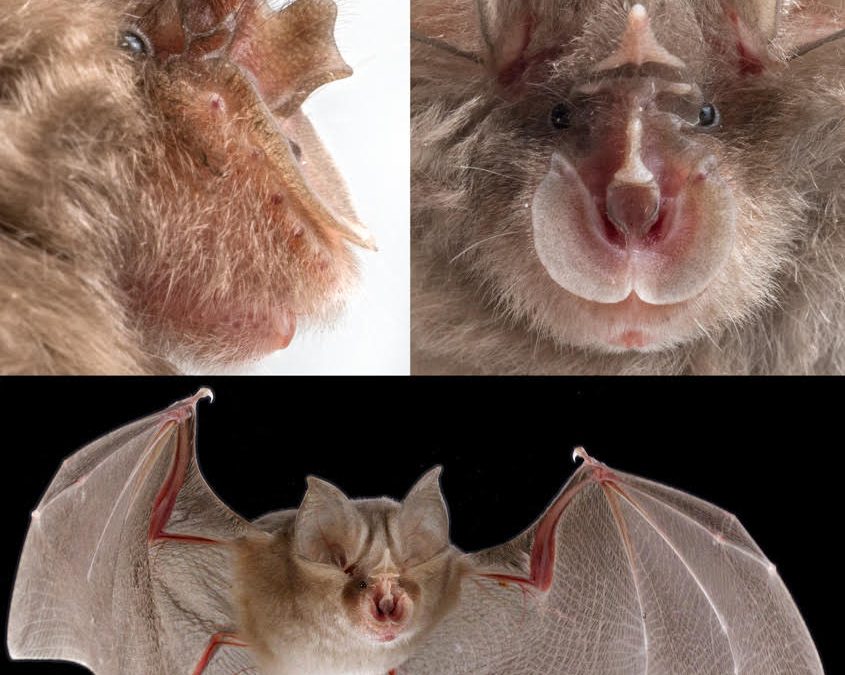A new study published in the Zoological Journal of the Linnean Society has increased the diversity of southern African horseshoe bats by three species. One (named Rhinolophus gorongosae) appears to occur only in Gorongosa National Park in Mozambique and possibly also on nearby Mount Mecula, and is genetically distinct from neighbouring horseshoe bat populations. With a mass of only 5 g this “dwarf” becomes Africa’s smallest horseshoe bat. Additionally, a population of a second species, Rhinolophus lobatus, previously considered to be identical to a West African species R. landeri, has been proven to be genetically distinct and unique to Mozambique and South Africa, and thus replaces R. landeri on the species list for Mozambique. A third species, Rhinolophus rhodesiae, previously thought to be a form of another species, has been confirmed to be a distinct species found in northern Mozambique and other parts of southern Africa.
Using a range of modern techniques from acoustic analysis of bat echolocation calls to molecular DNA analysis and morphological studies of the skull, noseleaf and penis bone, led by Professor Peter Taylor from University of Venda and the Centre for Invasion Biology and a large team of co-workers from the University of KwaZulu-Natal, Stellenbosch University, Wits University, University of Pretoria, University of Swaziland, Princeton and Harvard Universities in the USA, the Field Museum of Natural History in Chicago, the Ditsong National Museum and the Durban Natural Science Museum, the study highlighted the narrow distribution range of these new species, most of which are associated with mountain or hill habitats.
These descriptions were based largely on specimens collected in Gorongosa over the past five years and held at the Durban Museum in South Africa, as well as acoustic recordings made on Gorongosa bats. These specimens and recordings were collected as part of the E.O. Wilson Lab’s annual biodiversity surveys, which seek to document all macroscopic flora and fauna in the Greater Gorongosa Ecosystem.
Photo credit: Rhinolophus gorongosae by P. Naskrecki

